
FEATURE — When one thinks of farming in Utah’s Dixie, the first crop that comes to mind is typically cotton, but another crop the first settlers in the area imported from the South was sorghum. In the early 1900s, LaVerkin boasted as many as seven sorghum mills.
Early settlers loved sorghum as a sweetener not only because it grew readily in Dixie and was economical, but with the Civil War raging, people in the West couldn’t obtain sugar.

Festivals are a good way to get to know the history of towns and to enjoy foods and crafts that townsfolk create, and LaVerkin’s “Winter Fest” is no exception. Held annually on the second weekend in December, the 2016 festival included a Mayor’s Walk during which Mayor Kerry Gubler related some of LaVerkin’s history.
The group walked west along Center Street in LaVerkin while Gubler explained the struggles of canal building and the daunting task of keeping water in the ditch. He also pointed out the area where fertile fields grew apricot, peach, pear and nut orchards.
Today an elementary school and small farms with homes both old and new line Center Street. One can only imagine the vast farms that once produced LaVerkin’s single most important cash crop – sorghum.
In Cherrie Gubler Naegle’s book “LaVerkin, Town of My Youth,” she writes that sorghum has a gourmet quality; it is not as intensely sweet as sugar or honey. Sorghum molasses is nutritious; high in iron, calcium and potassium. It is often confused with other molasses that are made from sugarcane or sugar beets as a byproduct.
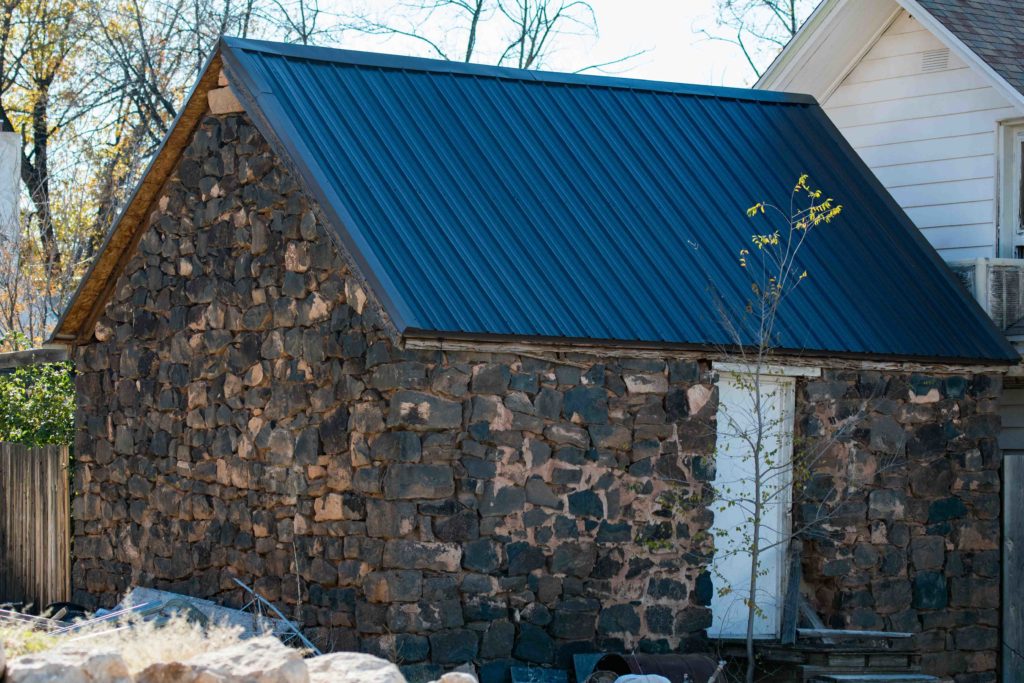
Gubler showed his Winter Fest walking group two small stone houses built by early pioneers in 1899: the home of Henry Gubler, his great uncle, and that of Joseph Gubler, his great grandfather.
Henry Gubler became LaVerkin’s first mayor. Joseph Gubler avoided leadership positions but was highly respected by many. The Gublers always grew the best fruit and produced a lot of sorghum.
In 1916, four Model T’s could be seen driving around the dirt and gravel roads of LaVerkin. However, when it came to hauling farm produce, the horse-drawn wagon was transportation of choice. Joseph Gubler wanted nothing to do with a machine that couldn’t follow a few simple directions such as “whoa!” and “giddy up!”
Every fall, LaVerkin farmers headed north to Cedar City with loaded wagon trains to peddle sorghum packed in wooden barrels made of black willow or ash. Each stave was cut and hand-planed by Marcellus Wright, a carpenter and blacksmith from Hurricane.
The sorghum lappers, as Dixie residents were nicknamed, continued to use their horse-drawn wagons well into the ‘50s.
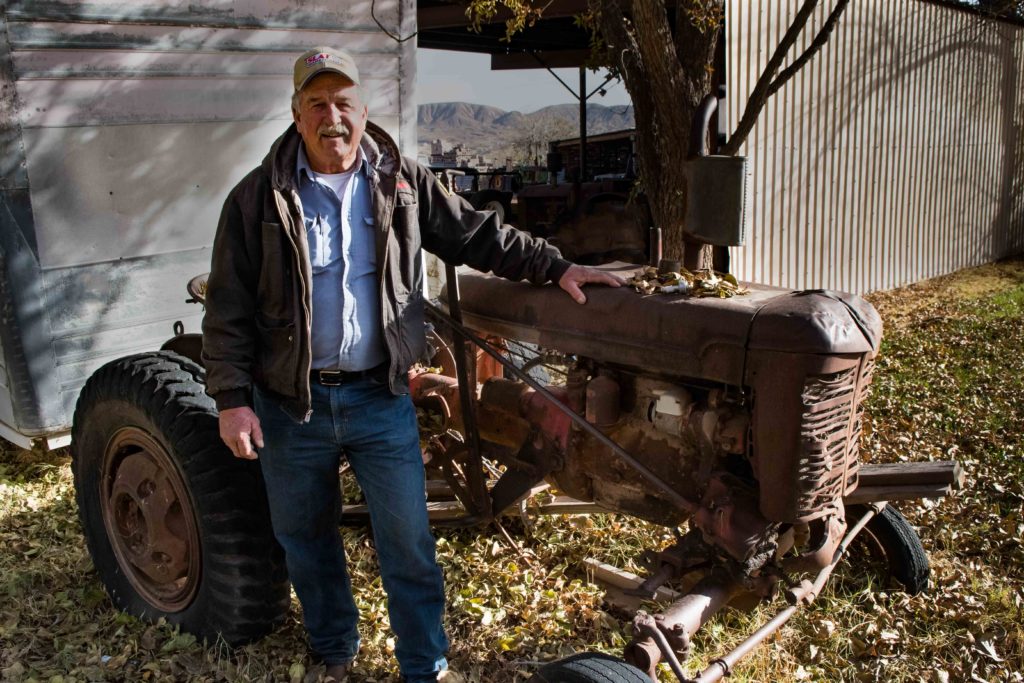
LaVerkin hasn’t entirely cornered the market on Southern Utah sorghum. John Kirkland, a burly, salt-of-the-earth kind of guy, grows and produces sorghum today on his 30-acre farm situated in the middle of Washington City. Kirkland was born in St. George after his father moved the family from Georgia to Southern Utah shortly upon joining The Church of Jesus Christ of Latter-day Saints in 1940.
The Kirklands had a desire to grow southern crops, such as okra, sweet onions, butterbeans, peanuts and sugarcane. Producing sorghum was a perfect fit. Kirkland remembers Bill Stratton’s vast fields of sorghum being grown precisely where Quail Lake is today. At age 25, Kirkland, his father and many brothers helped Stratton harvest and process his molasses. They learned the trade.
Kirkland doesn’t make sorghum production a hobby. He calls himself a bootlegger, or at least a sorghum lapper. He produces sorghum because he loves it, he said, and because pure sorghum is hard to come by. His wife, Rosie, likes to make a barbecue sauce with sorghum, and they always add it to their bread.
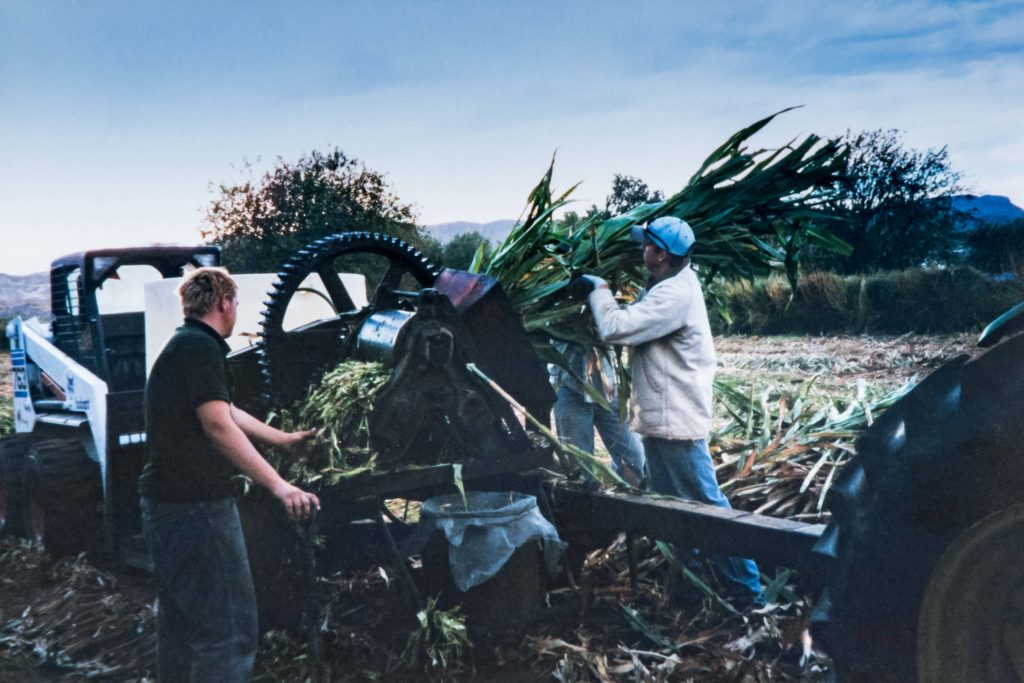
Sorghum canes thrive in the long, hot growing season of Washington County. Canes grow 12 to 15 feet tall. The stalk is pressed for juice which is boiled down to syrup. One acre will produce approximately 200 gallons of syrup, perfect for smaller farms. However, sorghum production is still an exhausting and labor-intensive procedure.
The art of making sorghum was passed down from father to son. Only farmers with large families would dare produce sorghum. Seeds were hand-sown and irrigated lightly, and a horse-drawn drag was pulled over the land to cover the seeds. Cultivating to create furrows for irrigating, thinning the plants and weeding were tasks that seemed endless.
Today harvesting sorghum canes takes four workers in the field to cut the canes at ground level with machetes and to remove the red seed tassels. Three people skim and stay around the pan, Kirkland said.
Knowing the exact moment to stop cooking is crucial and using fresh cane resolute. Kirkland uses a candy thermometer to register the heated syrup to 226 F. If it cooks longer, it will turn to hard tack; if it cooks less time, it will sour.
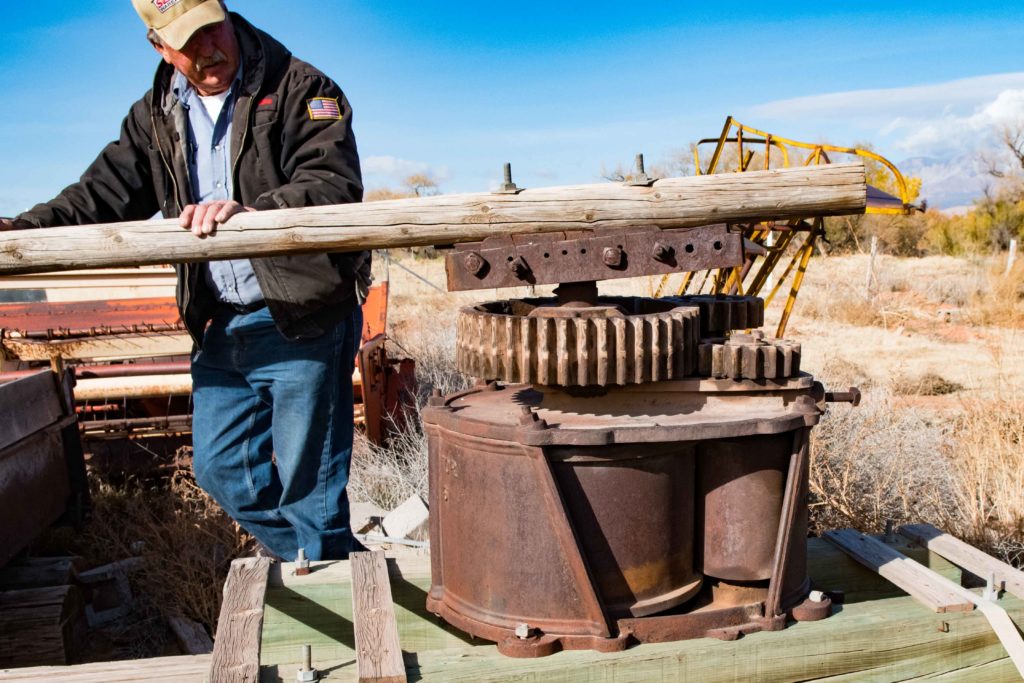
At the mill, a boom was pulled by a team of draft horses that walked a circle around three steel drums that crushed the stalks. The worker that fed the canes into the crusher had to duck every time the boom passed by.
Kirkland uses his backhoe with an auger that turns the shaft that squeezes the juice out of the stocks. The juice flows into a barrel and from there into a series of five to seven vats that are assembled over a furnace. Previously using a wood-burning furnace, more recently Kirkland invented a burner to use waste oil he gathers from transmission shops. It takes a gallon of oil to produce a gallon of molasses.
“But the oil doesn’t smoke. It burns real clean,” Kirkland said.
The new invention sounds like a blowtorch because he uses a leaf blower to atomize the drip of oil.
Kirkland offers a limited supply of sorghum to the community at St. George’s first garden nursery, Kirkland’s Fence and Garden Center, which now sells seeds and fencing – and sorghum – just in time for gingerbread baking.
Most gingerbread recipes call for dark, strong molasses, and sorghum fills the bill. Through generations folks have enjoyed the zesty aroma of gingerbread wafting through their home. For many, the tradition of baking and designing a gingerbread house kicks off the holidays. And knowing that the crunchy spiced cookie will keep for several weeks, artists put their heart and soul into amazing creations.

The Christmas tradition of baking and making gingerbread houses is said to have originated in Germany during the 16th century. The elaborate cookie-walled houses became popular when the Brothers Grimm wrote the story of Hansel and Gretel.
In St. George, the “Gingerbread Tour” has become an annual competition. This year, 20 creations were on display in city’s historic downtown area from the end of November through George Streetfest, the city’s First Friday monthly event, when awards were given.
German Gingerbread Cake
Recipe by Kathy Lillywhite
- Preheat oven to 350 F.
- Blend together ½ cup white sugar, ½ cup butter, 3 eggs, 1 cup molasses, ¼ cup warm water.
- Slowly add 2 cups whole wheat flour, 4 teaspoons baking powder, 2 tablespoons cinnamon, 2 teaspoons ginger, ½ teaspoon cloves, and ½ teaspoon salt (Optional: a pinch of cayenne pepper for a spicier taste.)
- Fold into mix, ¾ cup raisins, ¾ cup walnuts or other nut.
- Pour into 9-by-12-inch pan or loaf pan.
- Bake at 350 F for 1 hour or until knife comes out clean.
Visiting tips
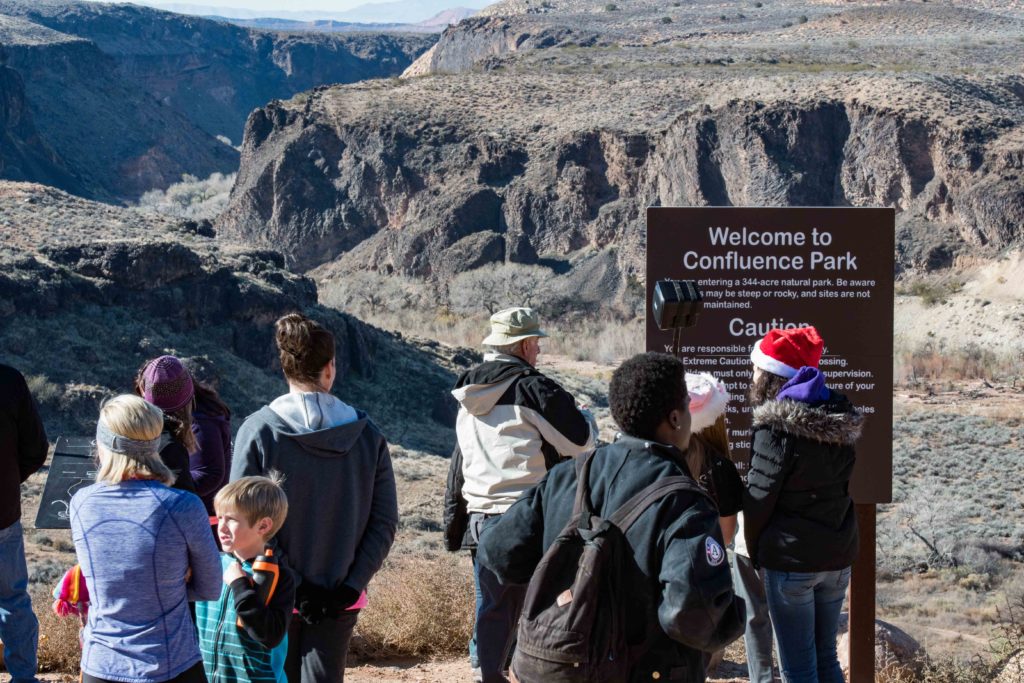
LaVerkin is 20 miles north of St. George. Take Interstate 15 to state Route 9 through Hurricane. SR-9 becomes State Street, and after approximately 3 miles, you will be in LaVerkin.
The Confluence Park with four entrances offers great hiking year round.
Read more: A Reserve, 4 trailheads, 2 creeks and a river all meet at Confluence Park.
Kirkland’s Fence and Garden Center, or Kirkland Sandy Acres Nursery, is located at 545 W. 400 North, St. George. Its hours of operation are Monday through Saturday, 9 a.m. to 5 p.m. Telephone 435-628-0844.
Click on photo to enlarge it, then use your left-right arrow keys to cycle through the gallery.
Feeding sorghum canes through rollers to squeeze out the juice, Washington, Utah, date not specified | Photo courtesy of John Kirkland, St. George News Proud farmer John Kirkland displays his garden, Washington, Utah, Dec. 12, 2016 | Photo by and courtesy of Jim Lillywhite, St. George News Boiling the sorghum juice, Washington, Utah, date not specified | Photo courtesy of John Kirkland, St. George News John Kirkland stands next to his first tractor, Washinton, Utah, Dec. 12, 2016 | Photo by and courtesy of Jim Lillywhite, St. George News Sorghum harvesting, Washington, Utah, date not specified | Photo courtesy of John Kirkland, St. George News John Kirkland's field of cottonwood trees along the Virgin River is open to the public for photo taking, Washington, Utah, Dec. 12, 2016 | Photo by and courtesy of Jim Lillywhite, St. George News Mayor's Walk at "Winter Fest," LaVerkin, Utah, Dec. 3, 2016 | Photo by and courtesy of Jim Lillywhite, St. George News Mayor's Walk at "Winter Fest," LaVerkin, Utah, Dec. 3, 2016 | Photo by and courtesy of Jim Lillywhite, St. George News As part of the "Winter Fest," the Mayor's Walk takes attendees past one of the first homes in LaVerkin, Utah, Dec. 3, 2016 | Photo by and courtesy of Jim Lillywhite, St. George News Now home to the city offices, this building originally served as the area's first school and church, LaVerkin, Utah, Dec. 3, 2016 | Photo by and courtesy of Jim Lillywhite, St. George News As part of the "Winter Fest," the Mayor's Walk takes attendees past the Gubler home from 1899, the first home in LaVerkin, Utah, Dec. 3, 2016 | Photo by and courtesy of Jim Lillywhite, St. George News "Winter Fest" in LaVerkin, Utah, Dec. 3, 2016 | Photo by and courtesy of Jim Lillywhite, St. George News Christmas packages are delivered by an old jalopy made by Sherman Howard from the parts of five different vehicles, Electric Light Parade during LaVerkin's Winter Fest, LaVerkin, Utah, Dec. 3, 2016 | Photo by and courtesy of Jim Lillywhite, St. George News As part of the "Winter Fest," the Mayor's Walk takes attendees to the confluence of the Virgin and LaVerkin rivers, LaVerkin, Utah, Dec. 3, 2016 | Photo by and courtesy of Jim Lillywhite, St. George News John Kirkland demonstrates an older sorghum squeezing mill that was operated by a team of horses, Washington, Utah, Dec. 12, 2016 | Photo by and courtesy of Jim Lillywhite, St. George News The Mayor's Choice award in the 2016 "Gingerbread Tour" as part of George Streetfest was Downtown Yoga, date not specified | Photo courtesy of Emceesquare Media, Inc., St. George News The 1st place winner in the 2016 "Gingerbread Tour" as part of George Streetfest was Main Street Antiques, date not specified | Photo courtesy of Emceesquare Media, Inc., St. George News
















About the series “Days”
“Days” is a series with St. George News contributor, feature writer and photographer Kathleen Lillywhite. She said:
I write my stories for people who say, ‘What is there to do around St. George?’ and for new folks just moving into this area.
Read more: See all of the features in the “Days” series.
Email: [email protected] | [email protected]
Twitter: @STGnews
Copyright St. George News, SaintGeorgeUtah.com LLC, 2016, all rights reserved.


How interesting!
I had no idea.